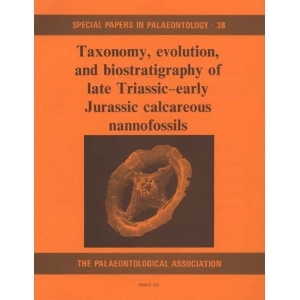
Special Papers in Palaeontology: 38
<br />1987
<br />
<br />Taxonomy, evolution, and biostratigraphy of late Triassic - Early Jurassic calcareous nannofossils.
<br />P R Bown
<br />
<br />118 pp., 15 pls, 8 text-figs.
<br />
<br />ABSTRACT. Structural analysis of Triassic and Lower Jurassic calcareous nannoftoras using the scanning electron microscope has revealed five major coccolith lineages, each defined by characteristic rim structures. The evolutionary and taxonomic importance of rim structure underlies the classification presented, which is set as far as possible within an evolutionary framework. One new order, Watznaueriales; one new family, Mazaganellaceae; three new genera, Mazaganella, Bucanthus, and Timorella; fourteen new species, Crepido/ithus granulatus, Mitro/ithus lenticularis, Timorella cypella, Bucanthus decussatus, Mazaganella pulla, M. protensa, Biscutum planum, B. grandis, B. intermedium, Discorhabdus criotus, Calyculus depressus, Bussonius leufuensis, Lotharingius primigenius, and L. imprimus; and two new subspecies, Parhabdo/ithus /iasicus /iasicus and P. I. distinclus are described and discussed. A comprehensive evolutionary scheme has been developed and the processes and patterns of coccolith evolution evaluated. A new biostratigraphic zonation scheme for northwest Europe based upon calcareous nannofossils is formulated with eight zones and eleven subzones. Mediterranean and Pacific assemblages revealed a marked provincialism in the Lower Jurassic. A Tethyan Realm (Mediterranean-Tethys) was characterized by abundant Mitro/ithus jansae (Sinemurian-Lower Toarcian) and the earlier first occurrence of many taxa. Pacific-Tethys information, while still limited, includes assemblage features distinct from those of the Mediterranean and north-west Europe.